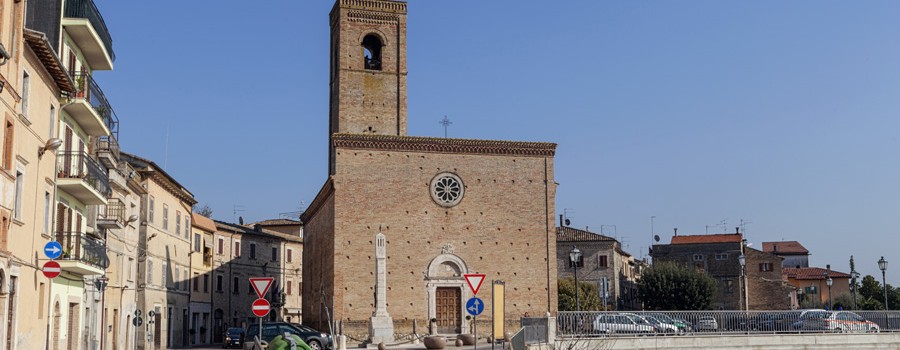The municipality of Appignano lies at the foot of Mount Ascensione, 194 metres above sea level, near the Chifenti torrent. The area is dominated by the presence of gullies and has its roots in Roman history.
According to legend, the settlement of Appignano was built at the end of the Social War (91–88 BC) when a Roman family chose the place as home, laying the foundations of the town. In the twelfth century, by which time it had been under the dominion of the Bishop of Ascoli firstly and that of Farfa subsequently, the town was fortified and obtained its freedom and its own constitution in 1290.
The church of San Giovanni Battista is in the centre of town, built entirely in brick in the first half of the 1300s, although the original structure dates back to the eleventh century. The reddish façade has a number of Renaissance elements that document a series of restorations dating back to the fifteenth–sixteenth centuries. Currently the interior has a nave and two aisles, and works from various eras including frescoes of Saint George and Saint Anthony of Padua; a Pentecost painted by Simone De Magistris in 1589; a fifteenth-century terracotta Pietà.
The church of Santa Maria del Piano Santo, also known as “La Cona”, stands outside town, built in the seventeenth century by the Rosario Confraternity over an existing building. It vaunts a precious fresco of the Coronation of the Virgin attributed to the fourteenth-century Master of Offida, evidence of the existence of a votive shrine here in the Middle Ages.




















